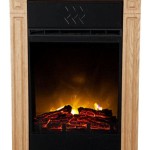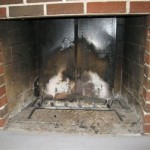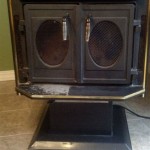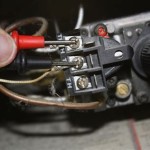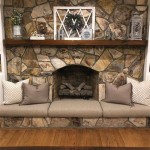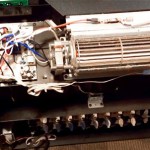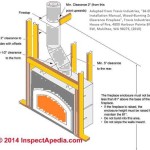Painting Old Brass Fireplace Doors: A Comprehensive Guide
Old brass fireplace doors, while originally intended to enhance a hearth's visual appeal, can often become tarnished and outdated over time. Instead of replacing these doors, painting them offers a cost-effective and relatively simple way to refresh their appearance and integrate them seamlessly into a modern or updated home décor. This article provides a detailed guide on how to paint old brass fireplace doors, ensuring a professional and lasting finish.
Before initiating the painting process, it's crucial to understand the challenges associated with painting brass. Brass is a non-ferrous metal that is naturally resistant to rust, but its smooth surface can make it difficult for paint to adhere properly. Proper preparation and the utilization of specific primers and paints designed for metal surfaces are essential for achieving a durable and aesthetically pleasing result.
Key Point 1: Preparation is Paramount
The success of painting brass fireplace doors hinges on meticulous preparation. This involves cleaning, degreasing, and sanding the surface to create an ideal base for paint adhesion. Neglecting any of these steps can lead to premature chipping, peeling, or an uneven finish.
Cleaning: Begin by thoroughly cleaning the brass doors to remove any dirt, dust, soot, grease, or wax buildup. Use a solution of warm water and a mild detergent. For stubborn grime, consider using a specialized brass cleaner, ensuring all residue is completely rinsed off with clean water. Allow the doors to dry completely before proceeding.
Degreasing: Even after cleaning, brass surfaces often retain a thin layer of oil, either from handling or from the manufacturing process. This oil can impede paint adhesion. To degrease the surface, use a commercial degreaser specifically formulated for metals. Follow the manufacturer's instructions carefully, typically involving applying the degreaser, allowing it to sit for a specified period, and then wiping it away with a clean cloth. Isopropyl alcohol can also be used as an alternative degreasing agent.
Sanding: Sanding the brass surface is crucial for creating a mechanical key for the primer to grip. Use a fine-grit sandpaper (typically 220-grit or higher) to lightly scuff the surface. Avoid applying excessive pressure, as the goal is not to remove the brass finish entirely, but rather to create a slightly roughened texture. After sanding, use a tack cloth to remove all sanding dust. This step is critical, as any remaining dust particles will compromise the paint finish.
Masking: Protect any areas of the fireplace or surrounding surfaces that you do not want to paint. Use painter's tape and drop cloths or plastic sheeting to adequately mask off these areas. Pay particular attention to the fireplace opening and any glass panels within the doors. Sharp, clean lines with the tape will ensure a professional-looking finish.
Key Point 2: Selecting the Right Primer and Paint
Choosing the correct primer and paint is as important as the preparation. Not all primers and paints are created equal, and using the wrong products can lead to adhesion issues, discoloration, or premature failure of the paint job. Look for products specifically designed for use on metal surfaces and able to withstand high temperatures.
Primer: A high-quality metal primer is essential for ensuring proper paint adhesion to the brass surface. An etching primer is highly recommended. Etching primers contain phosphoric acid or other chemicals that etch into the metal surface, creating an exceptionally strong bond. Apply the primer in thin, even coats, following the manufacturer's instructions for drying time between coats. Multiple thin coats are preferable to one thick coat, as they are less likely to run or drip.
Paint: For fireplace doors, it is vital to use a high-heat, heat-resistant paint. These paints are formulated to withstand the high temperatures generated by a fire without blistering, cracking, or emitting harmful fumes. Choose a paint with a heat resistance rating that exceeds the maximum temperature your fireplace is likely to reach. Popular choices include high-heat enamel paints and specialty fireplace paints. Similar to the primer, apply the paint in thin, even coats, allowing each coat to dry completely before applying the next. Several thin coats will provide a more durable and aesthetically pleasing finish than a single thick coat.
Paint Application: Application of the primer and paint can be achieved through different methods. Spray painting offers a smooth and even finish, particularly desirable for metal surfaces. Aerosol spray paints are readily available, and a spray paint gun attached to an air compressor can also be used. Alternatively, painting with a brush is acceptable, though it may require more attention to detail to avoid brushstrokes. If using a brush, choose a high-quality brush designed for use with the type of paint selected. Regardless of the application method, work in a well-ventilated area to avoid inhaling fumes.
Key Point 3: Safe Handling and Considerations
Working with paints, primers, and chemicals requires adherence to safety precautions to protect one's health and well-being. Furthermore, consideration must be given to the potential for heat exposure when the fireplace is in use.
Ventilation: Always work in a well-ventilated area when using primers, paints, and cleaning agents. Fumes from these products can be harmful if inhaled. If working indoors, open windows and use a fan to circulate air. Consider wearing a respirator mask to further protect yourself from inhaling fumes.
Protective Gear: Wear appropriate protective gear, including gloves, eye protection, and old clothing, to prevent skin and eye irritation from chemicals and paint splatters. Dispose of used materials, such as rags and sandpaper, properly according to local regulations. Follow the product labels for proper disposal instructions.
Curing Time: After painting, allow the fireplace doors to cure completely before exposing them to heat. Curing time varies depending on the type of paint used, but generally, it takes several days or even weeks for the paint to fully harden and achieve its maximum heat resistance. Consult the manufacturer's instructions for specific curing time recommendations. Rushing the curing process can result in paint failure when the fireplace is used.
By meticulously following these steps, individuals can successfully transform old brass fireplace doors into a visually appealing and functional component of their home décor. The key lies in proper preparation, the selection of appropriate materials, and a commitment to safety throughout the painting process. The results will be long-lasting and transform the look of the fireplace.

Fireplace Door Update With Spray Paint Roots Wings Furniture Llc

How To Spray Paint A Brass Fireplace Insert Erfly House

How To Spray Paint A Brass Fireplace Insert Erfly House

Fireplace Door Update With Spray Paint Roots Wings Furniture Llc

Painted Old Brass Fireplace Cover With Rustoleum High Heat Black Paint Love The New Look Brick Makeover Remodel

How To Paint Metal Fireplace Surround Four Generations One Roof

How To Paint A Brass Fireplace Screen Addicted 2 Decorating

How To Spray Paint A Brass Fireplace Insert Makeover Inserts Brick

Brass Fireplace Update East Coast Creative

How To Spray Paint A Brass Fireplace Insert Erfly House
Related Posts

